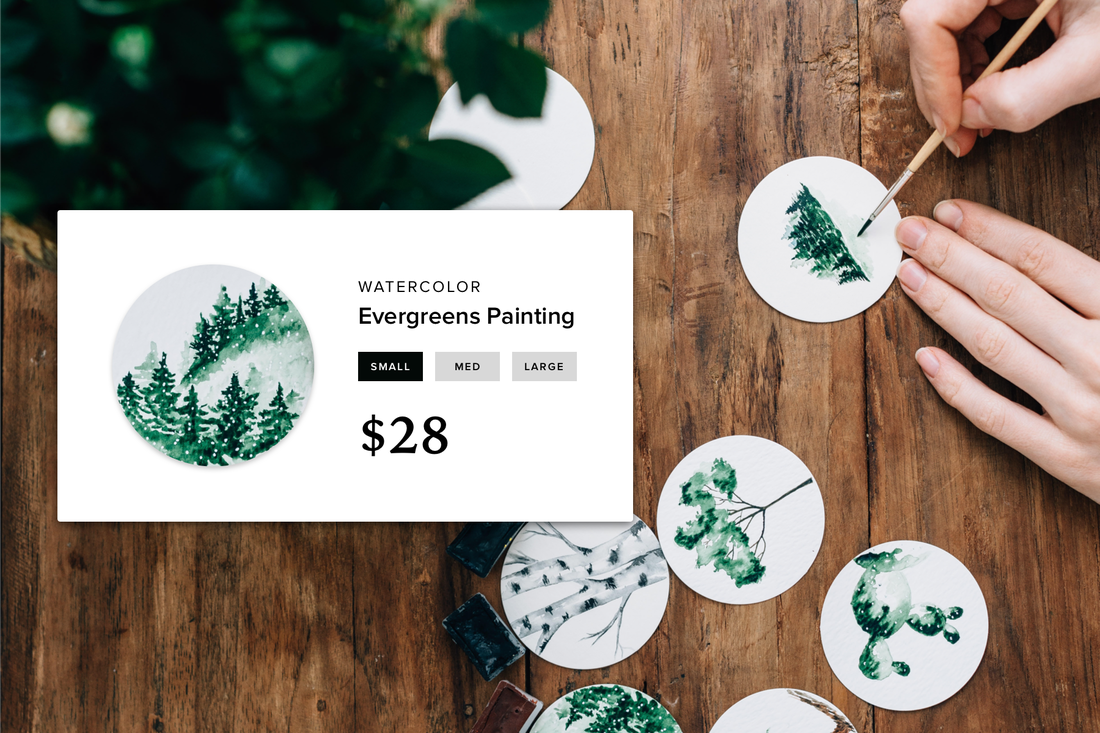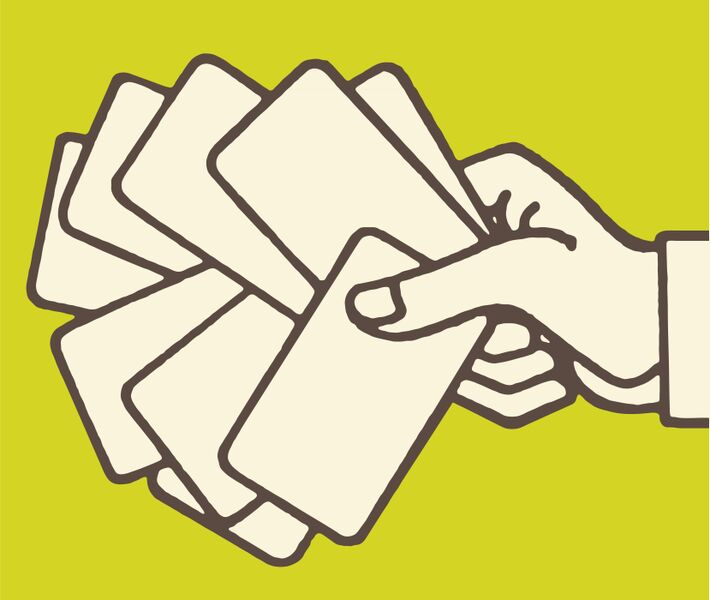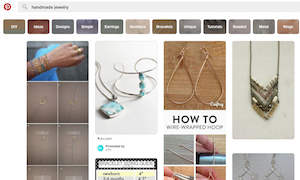Beautiful website? Check.
Business email? Check.
Business email? Check.
It's 2015, what else do you need? If a business card doesn't make that list, you could be missing out on valuable networking opportunities — essentially leaving money on the table.
Maybe you don't have a shop on main street, but you still need a business card. Even online entrepreneurs and small businesses owners mingle with people in the real world (and if you don't, please take this opportunity to step away from your computer and go tell your neighbors what you do for a living). Having a card handy is a matter of protocol and courtesy.
Twenty years ago you couldn't be in business —any business —and be taken seriously without having a crisp stack of cards in your wallet. Today, the lines are a little more blurred. Entrepreneurs whose storefronts are exclusively online find themselves wondering:
The truth is that as old fashioned as it might seem, a business card is still a vital piece of your marketing toolkit. If you're at a conference, meetup, charity event or mixer, handing someone a card is a lot more elegant than scribbling your URL down on a napkin and hoping it doesn't get tossed. There's simply no digital substitute for tactfully sharing contact information in person.
Leveraging your card to drive traffic
When it comes to putting together an effective business card, brevity rules. After all, you've got exactly 3.5 by 2.5 inches of space to work with! Think about your company's most important information — if you had 15 seconds to pitch your business and make a memorable impact, what might you say? That's what you'll include on your card.
Here's a list of the essentials:
If your business is primarily an online entity, you can skip some of the traditional contact information. Obviously you'll include your web address rather than a street address — and perhaps even email over phone number.
In addition to the basics, you might want to include your logo, and you'll definitely want to design your card to match your website branding. Don't forget to include a tagline or slogan that conveys your brand promise.
Why? Because when the person you've handed your card to goes home and looks through their pockets, they might have already forgotten what it is your company can do for them. By including this golden nugget of information (your brand promise, the problem you solve for others, what your offer is) you're giving someone a reason to hold on to that contact. Think of it as your card's call to action.
Let's look at two examples of business card copy that demonstrate this:
Maybe you don't have a shop on main street, but you still need a business card. Even online entrepreneurs and small businesses owners mingle with people in the real world (and if you don't, please take this opportunity to step away from your computer and go tell your neighbors what you do for a living). Having a card handy is a matter of protocol and courtesy.
Twenty years ago you couldn't be in business —any business —and be taken seriously without having a crisp stack of cards in your wallet. Today, the lines are a little more blurred. Entrepreneurs whose storefronts are exclusively online find themselves wondering:
- If my website is my business card, why waste money on designing and printing any?
- What can my card convey that my email signature won't?
- When will I really have an opportunity to hand out 500 of these things?
The truth is that as old fashioned as it might seem, a business card is still a vital piece of your marketing toolkit. If you're at a conference, meetup, charity event or mixer, handing someone a card is a lot more elegant than scribbling your URL down on a napkin and hoping it doesn't get tossed. There's simply no digital substitute for tactfully sharing contact information in person.
Leveraging your card to drive traffic
When it comes to putting together an effective business card, brevity rules. After all, you've got exactly 3.5 by 2.5 inches of space to work with! Think about your company's most important information — if you had 15 seconds to pitch your business and make a memorable impact, what might you say? That's what you'll include on your card.
Here's a list of the essentials:
- Your business name and your name (for solopreneurs, the business name might even be enough)
- Your web address
- Email contact
- Phone number (if you use a phone number while doing business)
If your business is primarily an online entity, you can skip some of the traditional contact information. Obviously you'll include your web address rather than a street address — and perhaps even email over phone number.
In addition to the basics, you might want to include your logo, and you'll definitely want to design your card to match your website branding. Don't forget to include a tagline or slogan that conveys your brand promise.
Why? Because when the person you've handed your card to goes home and looks through their pockets, they might have already forgotten what it is your company can do for them. By including this golden nugget of information (your brand promise, the problem you solve for others, what your offer is) you're giving someone a reason to hold on to that contact. Think of it as your card's call to action.
Let's look at two examples of business card copy that demonstrate this:
Good Neighbor Rentals, LLC
goodneighborrentalsllc.com
Linda Graham, [email protected] 888-888-8888
vs.
Good Neighbor Rentals, LLC
We match good landlords with great tenants
goodneighborrentalsllc.com
Linda Graham, [email protected] 888-888-8888
Now if you're looking to rent out a property, which card is going to compel you to look up Linda's website?
What other details should you include on a card? As few as humanly possible. A busy card is confusing and can distract from your goal (which is to have someone follow up). But depending on how you run your business, you might include social links and a short list of services you offer or products you sell.
Designing your card for impact
Business card design, like all things design-related, is probably best handled by a professional. If possible, hire the person who took care of your branding suite, logo, etc., or find a freelancer who is capable of duplicating the look and feel of your website. If you must DIY, keep in mind current design trends and best practices to avoid looking outdated and obsolete:
- Minimalist, flat design is in. 2015 is all about less being more. Your card design should exemplify that.
- Keep the color palette simple for the card — even if your website is a more complex design.
- Don't expect to duplicate your website, rather echo it or hint at the design on your business card. Use the same fonts and color scheme. Make sure your business card mimics all the different brand triggers you've set up for your online space.
- Use both front and back. Consider your logo and brand promise on the front, and your contact information on the back. This will give you more room for branding and make the card-to-website transition more seamless for your guests.
- And most importantly, make sure your font is readable — that means higher contrast, bigger font. If you have to remove copy and contact information from your card to make your name and URL readable, that's a worthy sacrifice.
Need examples?
- 35 Creative and beautiful business cards
- 45 Top examples of letterpress business cards
- 15 Beautiful business card designs
Realistically you can put together an effective, elegant and inexpensive business card in an afternoon, so there's no reason why you shouldn't make it part of your marketing arsenal. Having a card on hand to give to people you meet does more than simply share your contact information. It also conveys your confidence and passion for your work, and lets others know that you mean business — and you do, after all.
 Melissa Haney Melissa is a writer specializing in social media and web development.
Melissa Haney Melissa is a writer specializing in social media and web development.





